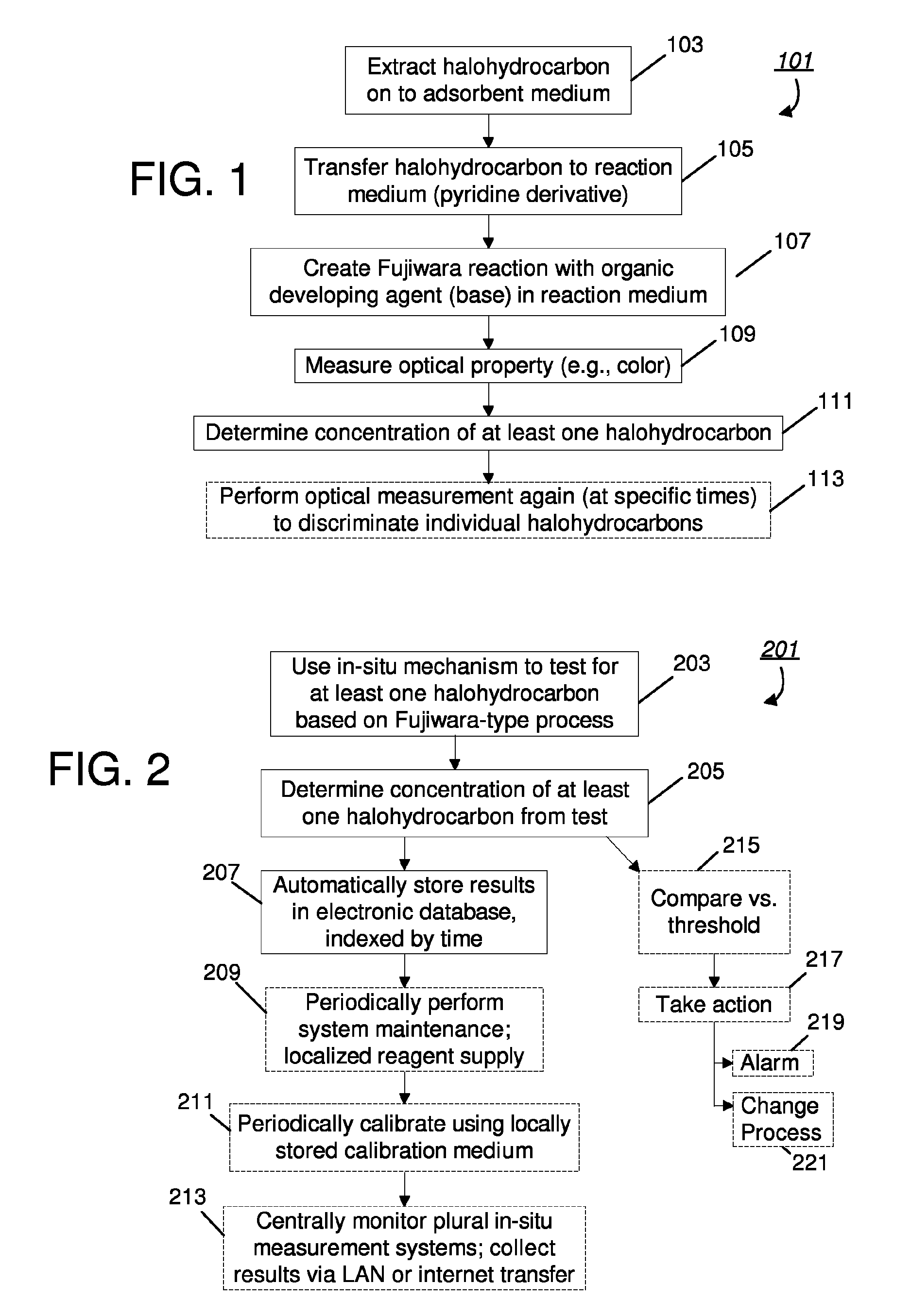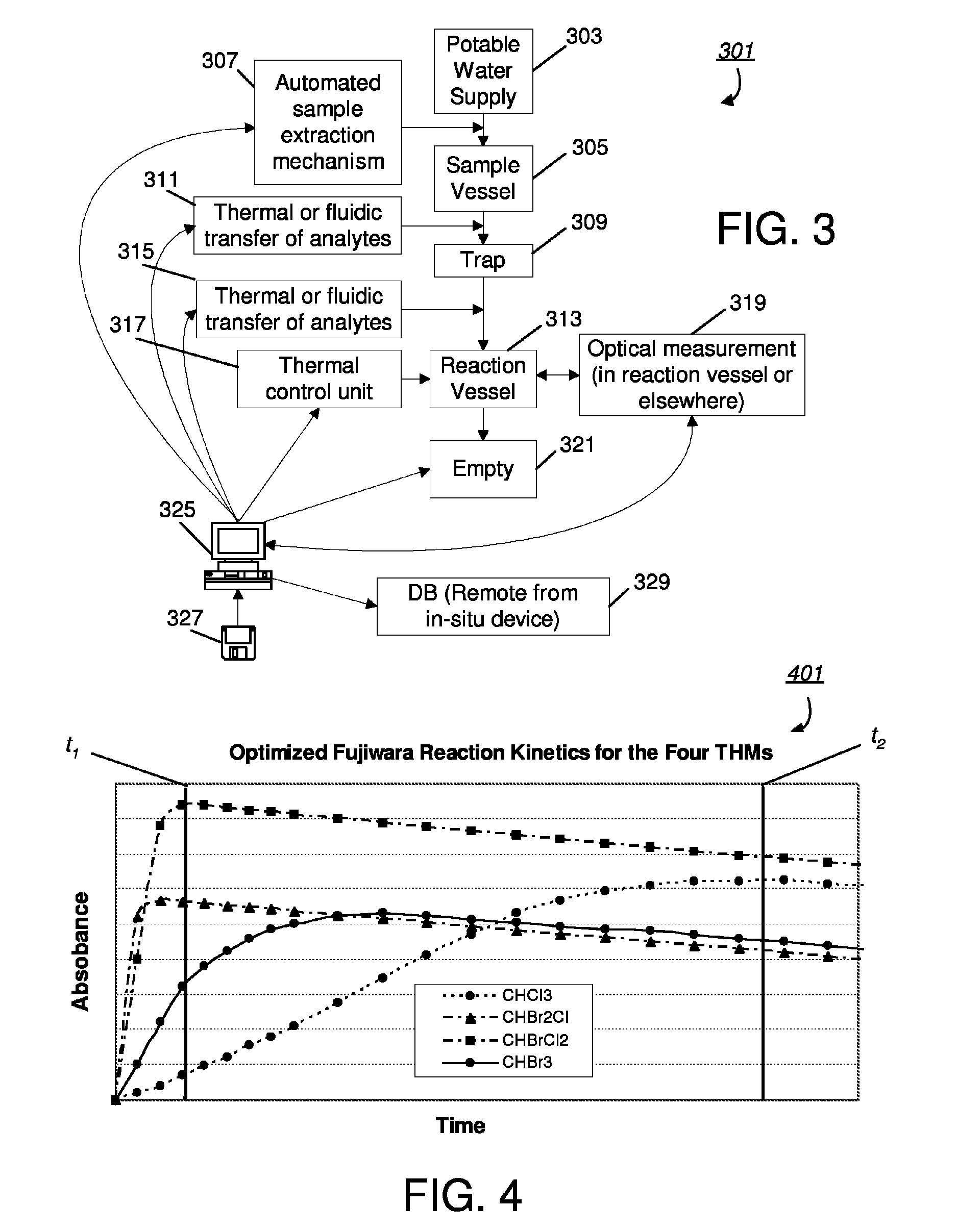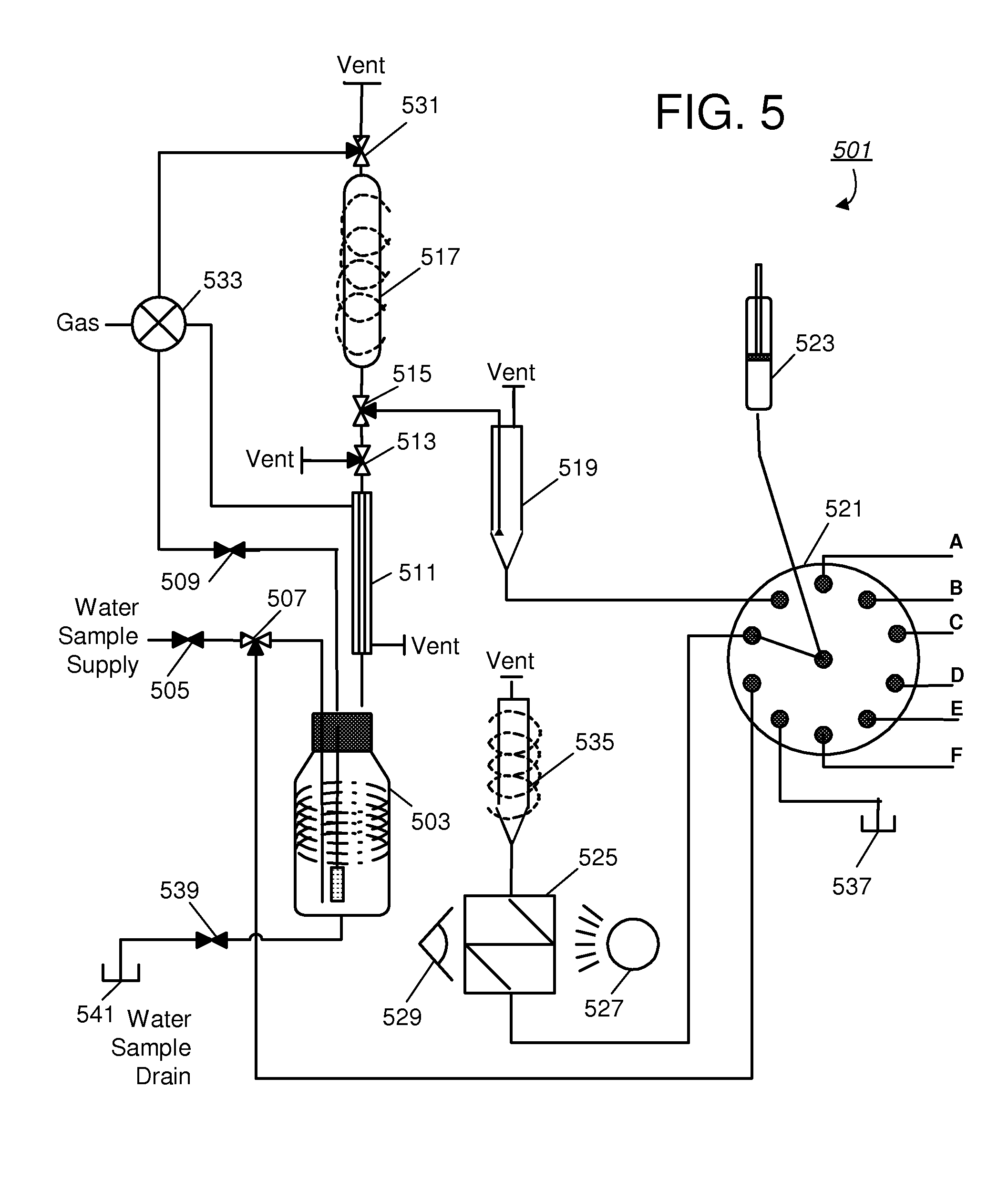Methods and apparatus for determination of halohydrocarbons
a technology of halogenated hydrocarbons and methods, applied in the direction of testing water, instruments, material analysis, etc., can solve the problems of fujiwara reactions, high labor intensity and time consumption, and halogenated disinfection, and achieve the effect of low cos
- Summary
- Abstract
- Description
- Claims
- Application Information
AI Technical Summary
Benefits of technology
Problems solved by technology
Method used
Image
Examples
embodiment 101
[0025]FIG. 1 provides a block diagram of an embodiment 101 of a method and system for measuring halohydrocarbons using a modified Fujiwara reaction. A sample is first processed to extract at least one halohydrocarbon to an adsorbent medium, as indicated by step 103. After being concentrated on the adsorbent medium, the halohydrocarbons are transferred to a reaction medium having a pyridine derivative, as referenced by numeral 105. In addition to the pyridine derivative, the reaction medium may be an organic solution used to elute the analytes from the adsorbent medium (such as acetonitrile). Alternatively, the analytes may be removed by a thermal desorption process, such as by heating the adsorbent medium to a point where the analytes become volatile, and then sweeping the volatile analytes into the reaction medium using gasses such as nitrogen or air. As depicted by reference numeral 107, the analytes are subjected to a modified Fujiwara reaction, based on an organic developing age...
embodiment 201
[0027]FIG. 2 introduces a system embodiment 201, including a business method, which may rely on the embodiment of FIG. 1. In particular, an in-situ apparatus may be used to test for at least one halohydrocarbon, based on a modified Fujiwara process as just described and as reference by numeral 203. Because a modified chemical process is used, including optional automation, the system may be performed in-situ and may help limit worker exposure to noxious fumes or hazardous chemicals, and provide greater accuracy relative to phase-separated reactions. Based on the measurements, concentration of at least one halohydrocarbon is determined (per numeral 205). The results may be electronically stored in a database, indexed by time, thereby serving the compliance goals referenced above, e.g., a log may be generated and kept to show compliance and to track situations and times when detected substances exceed desired levels, as alluded to by numeral 207.
[0028]FIG. 2 also references several op...
embodiment 301
[0030]FIG. 3 presents a block diagram of an embodiment 301 of a system or device that may be used for in-situ measurement of halohydrocarbons. In particular, a potable water supply 301 is to be monitored to periodically determine the presence of halohydrocarbons. In one embodiment, monitoring may occur taken at frequent intervals, for example, every hour, around the clock. The water supply 303 may be for example a particular point in a municipality's or water company's distribution network. At each monitoring interval, a sample may be extracted from the potable water supply and transferred to a vessel 305. The sample extraction may be part of an on-line mechanism that automatically draws a predetermined volume of water into the purge vessel. Halohydrocarbons are then extracted from the water test sample and transferred to a column trap 309, which contains the adsorbent medium previously referred to (e.g., a porous medium). This extraction may be accomplished by passing gas through t...
PUM
| Property | Measurement | Unit |
|---|---|---|
| temperature | aaaaa | aaaaa |
| temperature | aaaaa | aaaaa |
| temperatures | aaaaa | aaaaa |
Abstract
Description
Claims
Application Information
 Login to View More
Login to View More - R&D
- Intellectual Property
- Life Sciences
- Materials
- Tech Scout
- Unparalleled Data Quality
- Higher Quality Content
- 60% Fewer Hallucinations
Browse by: Latest US Patents, China's latest patents, Technical Efficacy Thesaurus, Application Domain, Technology Topic, Popular Technical Reports.
© 2025 PatSnap. All rights reserved.Legal|Privacy policy|Modern Slavery Act Transparency Statement|Sitemap|About US| Contact US: help@patsnap.com



